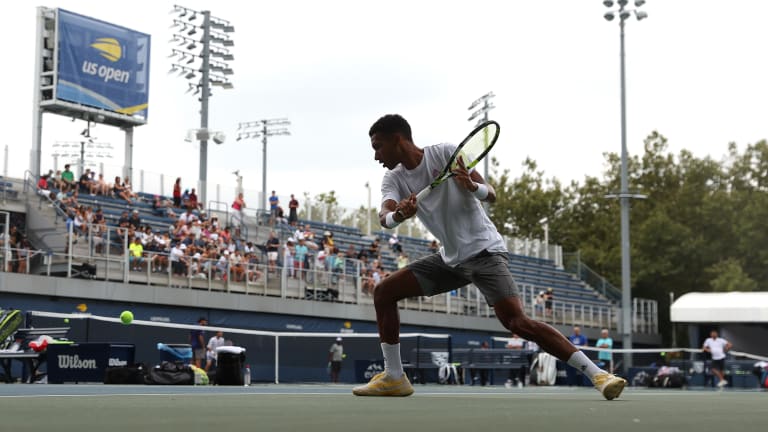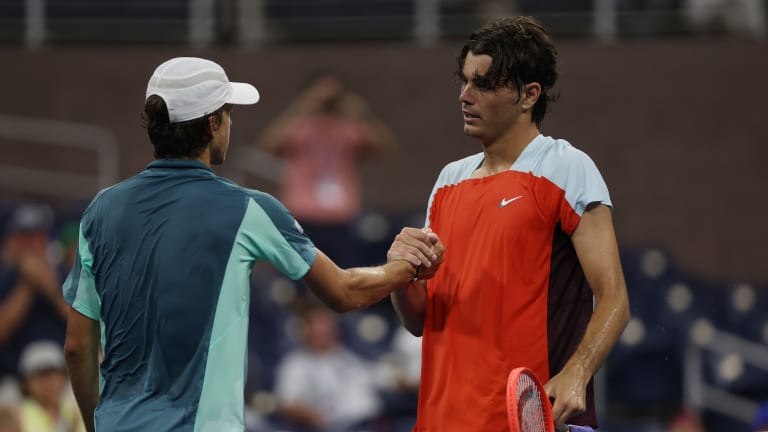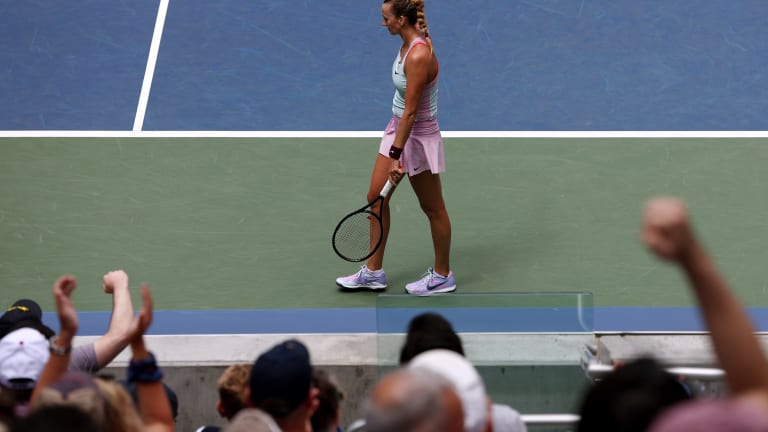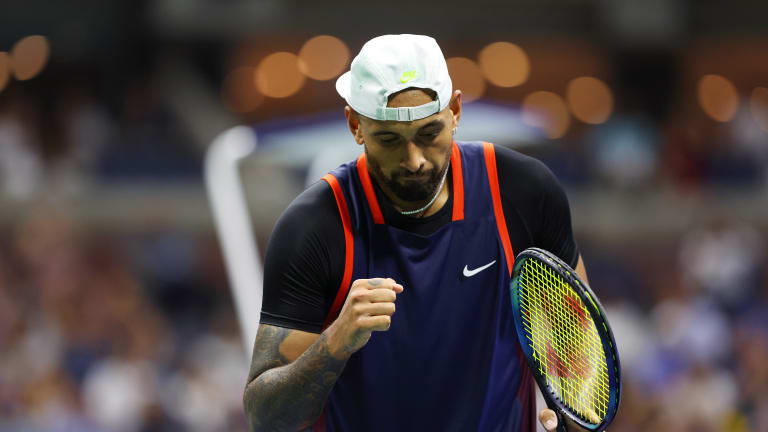The Rally: Taking stock of a slick US Open; its first-week dramas, big and small; and the Kyrgios-Medvedev showdown that sent us into week two
By Sep 05, 2022US Open revamps mixed doubles format, adds $1 million prize to incentivize "biggest names in the sport"
By Feb 11, 2025US Open adds a 15th day, moves to Sunday start in 2025
By Jan 29, 2025Post-2024 US Open WTA storylines: The Age of Aryna; what's next for Swiatek and Gauff?
By Sep 09, 2024Post-2024 US Open ATP storylines: The race between Alcaraz and Sinner for No. 1 ... and more
By Sep 09, 2024Jannik Sinner’s US Open title run won’t clear the air around him entirely
By Sep 09, 2024Taylor Fritz fails in US Open final, but hope springs for American men's tennis
By Sep 09, 2024Jannik Sinner storms to second major title, defeats Swift, Kelce-backed Taylor Fritz at US Open
By Sep 08, 2024Jessica Pegula's willingness to take chances paid off at the US Open
By Sep 08, 2024Aryna Sabalenka won her first US Open by learning from her past heartbreaks in New York
By Sep 08, 2024The Rally: Taking stock of a slick US Open; its first-week dramas, big and small; and the Kyrgios-Medvedev showdown that sent us into week two
With dispatches from Flushing Meadows.
Published Sep 05, 2022
Advertising
Advertising

Always Playing: Pickleballtv
The 24-hour channel of America’s fastest growing sport now has an app.
Advertising

Pictured here before the tournament, Auger-Aliassime was one of the players who drew a crowd–in the bleachers and in the tunnel—on the practice courts.
© Getty Images
Advertising

Holt had hit with Fritz many times before their first-round encounter, but probably never as well as he did on Monday.
© Getty Images
Advertising

Kvitova saved two match points on serve before advancing in over two and a half hours on Armstrong.
© Getty Images
Advertising

Caroline Garcia has won three tournaments on three surfaces in the last three months.
© Getty Images
Advertising

Medvedev offered a hand to Kyrgios after the Aussie took a spill during their sold-out fourth-rounder.
© AFP via Getty Images
Advertising

Kyrgios gave one point away, but he won far more with a game style—and newfound confidence—that could take him very far.
© Getty Images